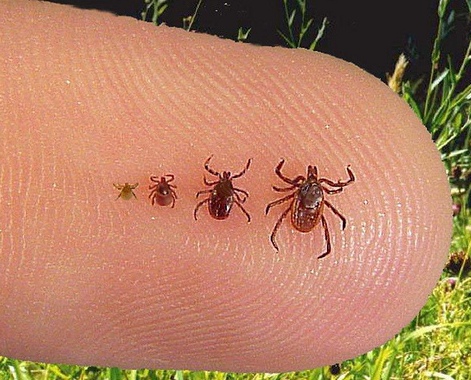People re-infected with Lyme disease may develop strain-specific immunity
Have you ever wondered whether an infection with the Lyme disease (LD) spirochete elicits protective immunity? Izac and Marconi addressed that question in a recent study. The authors examined mice infected with clonal populations of spirochetes to determine if broad or strain-specific, bactericidal antibody responses occurred. [1]
How do Lyme disease vaccines work in dogs?
Wouldn’t it be great if the vaccines which prevent Lyme disease in dogs also worked for humans? Have you ever wondered how vaccines keep dogs safe? Izac and Marconi address those questions in their article “Diversity of the Lyme Disease Spirochetes and its Influence on Immune Responses to Infection and Vaccination.” [1]
Cats carry all types of ticks and tick-borne diseases
Did you know the cat you may be cuddling with on your couch every evening could be infected with a host of tick-borne diseases? Unlike our canine friends, cats are typically not symptomatic when it comes to such diseases. But as researchers have found, that doesn’t mean they are free from disease.
The best antibiotics to treat Borrelia miyamotoi?
Borrelia miyamotoi may be a disease you have never heard of. But the threat of this tick-borne illness is very real. First described in Japan in 1995, this emerging infectious disease is transmitted by the same blacklegged tick which carries the Lyme disease pathogen. In “Antimicrobial susceptibility of Borrelia miyamotoi,” researchers examine the effectiveness of several antibiotic regimes in the treatment of HTBRF.
Only a minority of children with Lyme disease recall a tick bite
With at least 300,000 new cases of Lyme disease each year in the U.S., an estimated 25% of those involve children. Unfortunately, the prevailing message has been that the majority of people, including children and adolescents, who develop Lyme disease will see either a tick bite or a bull’s eye rash. This just isn’t the case, as a new study by Nigrovic and colleagues demonstrates.
Lyme borreliosis patients not receiving treatment, says infectious disease doctor
In an editorial entitled “Patients with Lyme borreliosis are failing to receive treatment,” an infectious disease specialist from Norway, P. Bjark, [1] raises serious concerns about the findings of a study published in the Journal of the Norwegian Medical Association. [2]
Lyme disease forces 24-year-old army officer out of military
We often think of Lyme disease as a threat to the public engaging in enjoyable outdoor activities, like hiking, camping and gardening. But Lyme disease and other tick-borne illnesses are a constant threat to individuals serving in the military, who spend most of their time working in heavily forested or mountainous terrain.
Lyme disease manifests as an autoimmune disorder, Sjögren’s syndrome
Lyme disease symptoms can mimic many other illnesses and have been linked to several autoimmune diseases including Sjögren’s syndrome [1], Dermatomyositis [2], and Guillain-Barre syndrome [3]. A case report by Smiyan entitled “Sjögren’s syndrome and lymphadenopathy unraveling the diagnosis of Lyme disease,” reflects the importance of a thorough clinical evaluation.
Study finds tiny larval ticks can transmit Borrelia miyamotoi
Nymphal and adult black-legged ticks, also known as deer ticks, harbor a growing number of pathogens. But researchers are now discovering that larval ticks, which are even smaller, may pose an equal threat to public safety as a new study describes larval ticks infected with the tick-borne bacteria Borrelia miyamotoi.
Will steroid injections help children with Lyme arthritis of the knee?
Clinicians have been reluctant to prescribe steroids to Lyme disease patients because it suppresses the immune system, giving the Borrelia bacteria an opportunity to multiply. And this, in turn, can make Lyme disease symptoms, including arthritis and joint pain, even worse.













